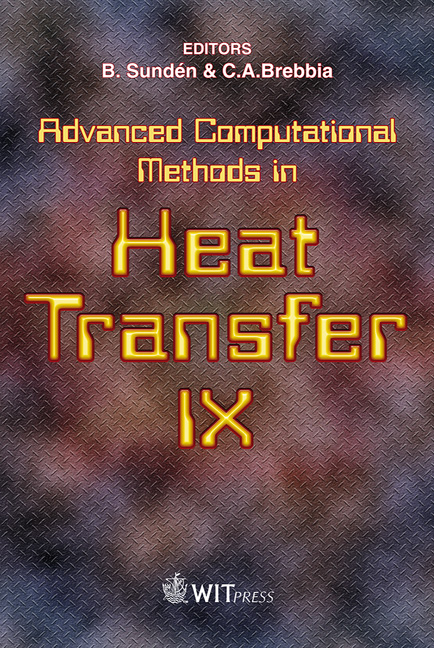Presentation Of The Hemisphere Method
Price
Free (open access)
Transaction
Volume
53
Pages
10
Published
2006
Size
999 kb
Paper DOI
10.2495/HT060121
Copyright
WIT Press
Author(s)
P. Vueghs & P. Beckers
Abstract
In the field of image synthesis or thermal radiation, the challenge is to calculate the radiative exchanges between the surfaces of the model. To quantify the interactions between the surfaces, we define a number called view factor, noted Fij. The view factor represents the fraction of the diffusely emitted power from a surface Ai which reaches a surface Aj. The calculation of the view factors is a very difficult problem. A method has been designed in image synthesis and also applied to thermal problems. This method, called hemi cube, uses a cube as a screen onto which all the scene is projected. Here, we present another method that we have named hemisphere, where the surface of projection is the unit sphere surrounded by the hemi cube. This projection, based on the Nusselt’s Analogy, is simpler and more natural than the hemi cube’s projection. We show in this paper that the hemisphere method is faster and more efficient than the hemi cube. In this paper, we present a tessellation of the hemisphere into cells characterized by an equal elementary view factor. This allows us to avoid over sampling and to save computation time. We show that this method is faster and more efficient than the classic hemi cube. We present also some results that illustrate the efficiency of the hemisphere method. Keywords: view factor, hemisphere, projection, spherical coordinates, thermal radiation, Nusselt’s Analogy, ray casting. 1 Definition of the view factors In the field of image synthesis, it is necessary to calculate the inter reflection of light between all the surfaces that compose the scene [9]. In the same way, in thermic, we have to evaluate all the heat transfers between all the surfaces of the model.
Keywords
view factor, hemisphere, projection, spherical coordinates, thermal radiation, Nusselt’s Analogy, ray casting.





